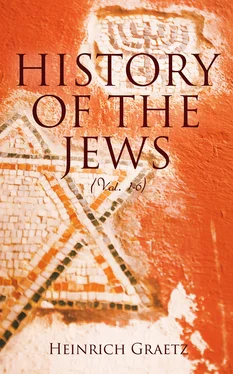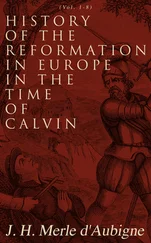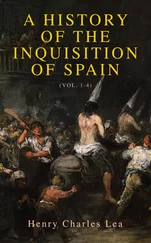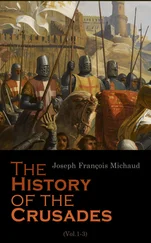The growth of Israel as a distinct race commenced amidst extraordinary circumstances. The beginning of this people bore but very slight resemblance to the origin of other nations. Israel as a people arose amidst peculiar surroundings in the land of Goshen, a territory situated in the extreme north of Egypt, near the borders of Palestine. The Israelites were not at once moulded into a nation, but consisted of twelve loosely connected shepherd tribes.
These tribes led a simple life in the land of Goshen. The elders ( Zekenim ) of the families, who acted as their chiefs, were consulted on all important occasions. They had no supreme chieftain, nor did they owe allegiance to the Egyptian kings; and thus they habitually enjoyed the freedom of a republic, in which each tribal section was enabled to preserve its independence without falling into subjection or serfdom. Although they did not become intermixed with the ancient Egyptians, who in fact had an aversion to shepherds—perhaps on account of the oppression they had in former ages endured from such shepherds (the Hyksos)—yet opportunities for contact and mutual communication could not be wanting. Some families of Israel had abandoned their pastoral pursuits, and devoted themselves to agriculture or industrial occupations, and were therefore brought into connection with the inhabitants of towns. It seems that the members of the tribe of Ephraim stood in closer social contact with the original inhabitants. This intercourse had a favourable influence upon the Israelites.
The Egyptians had already gone through a history of a thousand years, and attained to a high degree of culture. Their kings, or Pharaohs, had already built populous cities, and erected colossal edifices, temples, pyramids and mausoleums. Their priests had acquired a certain degree of perfection in such arts and technical accomplishments as were suited to the requirements of the country, as for example, architecture and hydraulic constructions, the kindred science of geometry, the art of medicine, and the mystery of embalming for the perpetual preservation of the remains of the departed; also the artistic working of objects in gold, silver and precious stones, in order to satisfy the luxurious demands of the kings. They also knew the art of sculpture and the use of pigments. They studied chronology, together with astronomy, which was suggested by the periodical overflow of the Nile. The all-important art of writing had been invented and perfected by the Egyptian priests. They first used stones and metals to commemorate the renown of their monarchs; and they afterwards employed the fibre of the papyrus shrub, which was originally marked with clumsy figures and subsequently with ingeniously drawn symbols. Of these several attainments the Israelites seem to have acquired some notion. The members of the destitute tribe of Levi in particular, being unencumbered by pastoral service or by landed possessions, appear to have learnt from the Egyptian priests the art of writing. Owing to their superior knowledge, they were treated by the other tribes as the sacerdotal class, and hence they held, even in Egypt, the privileged distinction of their priestly position.
The residence of the Israelites in Egypt was of great advantage to them. It raised them, or at least a portion of them, from a rude state of nature to a higher grade of culture. But what they gained on the one hand, they lost on the other; and in spite of their arts and accomplishments, they would in time have fallen into a more abject condition. Amongst no people which had advanced beyond the first stage of Fetish worship, had idolatry assumed such a hideous development, or so mischievously tainted the habits, as was the case with the Egyptians. By combining and intermingling the gods of the various districts, they had established a complete system of polytheism. As a matter of course they worshipped goddesses as well as gods. What made the mythology of the Egyptians especially repulsive, was the fact that they placed the deified beings of their adoration, from whom they expected help, far below the level of human beings.
They endowed their gods with the shape of animals, and worshipped the inferior creatures as divine powers. Ammon, their chief god, was represented with ram's horns, the goddess Pecht (Pacht) with a cat's head, and Hathor (Athyr), the goddess of licentiousness, with a cow's head. Osiris, who was worshipped throughout Egypt, was represented in a most loathsome and revolting image, and the universally honoured Isis was often pictured with a cow's head. Animals being scarce in the Nile region, great value was attached to their preservation, and they received divine homage. Such honours were paid to the black bull Apis ( Abir ) in Memphis, to the white bull Mnevis in Heliopolis, to the lustful goats, to dogs, and especially to cats; also to birds, snakes, and even mice. The killing of a sacred bull or cat was more severely punished than the murder of a human being.
This abominable idolatry was daily witnessed by the Israelites. The consequences of such perversions were sufficiently deplorable. Men who invested their gods with the shape of animals sank down to the level of beasts, and were treated as such by the kings and by persons of the higher castes—the priests and soldiers. Humanity was contemned; no regard was paid to the freedom of the subjects, and still less to that of strangers. The Pharaohs claimed to be descended from the gods, and were worshipped as such even during their lifetime. The entire land with its population was owned by them. It was a mere act of grace on their part that they granted a portion of the territory to cultivators of the soil.
Egypt, in fact, was not peopled by an independent nation, but by bondmen. Hundreds of thousands were forced to take part in compulsory labour for the erection of the colossal temples and pyramids. The Egyptian priests were worthy of such kings and gods. Cruelly as the Pharaohs harassed their subjects with hard labour, the priests continued to declare that the kings were demi-gods. Under the weight of this oppression the people became devoid of all human dignity, and submitted to the vilest bondage without ever attempting to relieve themselves from the galling yoke. The repulsive idolatry then prevailing in Egypt had yet further pernicious consequences. The people lost the idea of chastity, after they had placed the brute creation on an equality with their deities. Unspeakable offences in the use of animals had become of daily occurrence, and entailed neither punishment nor disgrace. The gods being depicted in unchaste positions, there appeared to be no need for human beings to be better than the gods. No example is more contagious and seductive than folly and sin. The Israelites, especially those who were brought into closer contact with the Egyptians, gradually adopted idolatrous perversions, and abandoned themselves to unbridled license. This state of things was aggravated by a new system of persecution. During a long period, the Israelites residing in the Land of Goshen had been left unmolested, they having been looked upon as roving shepherds who would not permanently settle in Egypt. But when decades and even a century had passed by, and they still remained in the land and continued to increase in numbers, the council of the king begrudged them the state of freedom which was denied to the Egyptians themselves. The court now feared that these shepherd tribes, which had become so numerous in Goshen, might assume a warlike attitude towards Egypt. To avoid this danger, the Israelites were declared to be bondmen, and were compelled to perform forced labour. To effect a rapid decrease in their numbers, the king commanded that the male infants of the Israelites should be drowned in the Nile or in some of the canals, and that only the female infants should be spared. The Israelites, formerly free in the land of Goshen, were now kept "in a house of bondage," "in an iron furnace"; here it was to be proved whether they would conform to their hereditary law, or follow strange gods.
Читать дальше












